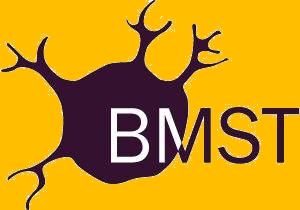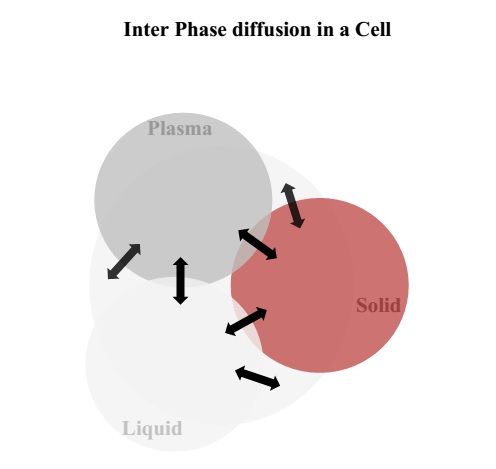Biomedical Sciences Today
A fast, peer-reviewed and multidisciplinary publication platform



Announcement from Editorial office:
We are currently accepting Commentaries, Letters and Regular Research manuscripts submission for volume 2,
scheduled to be published in Fall, 2015. Please
email us your cover letter and manuscript to bmst@mdtcanada.ca (prepared following guidelines).
MDT Canada is a newly founded Canada-based company. The company aims to
provide services to solve all kinds of problems of complex systems from physics, biology to social science
using expertises in Modeling Dynamic Trends. Here are some examples!!
☛ MDT Canada provides aptamer design services.
We can "design" aptamers according to your requests utilizing the power of energetics
and entropy based techniques.Our patented, Entropic Fragment Based Approach (EFBA), is one technique used.
☛ Regarding membrane permeation of your drugs, we can test, measure and provide consultancy.
☛ We offer our expertise to set up in silico binding dynamics studies and in vitro binding
assay protocols for your laboratories. For details see www.mdtcanada.ca
Volume 1: April 15, 2015
EDITORIAL
REGULAR ARTICLES
Computation by Biological Systems
Diffusion Across Cell Phase States
Oligo-distance: A Sequence Distance Determined by Word Frequencies
Entropic Analysis Reveals Unique Features in Anti-cancer Drugs

About the cover
EDITORIAL
Biomedical Sciences Today: A platform for presenting latest research results to the scientific community and beyond
Md Ashrafuzzaman, Chih-Yuan Tseng, Jack A. Tuszynski
e1 |
The biomedical sciences community has now blossomed into a diverse society of researchers whose backgrounds involve almost all disciplines in natural sciences, parts of social sciences and engineering and applied technologies. This great spectrum of knowledge calls for a platform where this community of scientists can fruitfully exchange ideas, strategies, approaches and techniques and, above all, document the results of the various types of fundamental and applied biomedical researches. Unfortunately, we have found an acute dearth of publishing outlets that could serve the above purpose completely. Two prestigious journals, Nature and Science, cover the subjects partially but the scopes are limited and access to these elite journals is virtually impossible for a vast majority of scientists. In our opinion, more open publishing platforms are badly needed today more than ever...(PDF)
REGULAR ARTICLES
Trace Elements and Heavy metals in Five Common Cultured and Captured Fishes from Rajshahi City, Bangladesh
M. Golam. Mortuza and Fahad A. Al-Misned
e2 |
Concentrations of 15 trace elements and heavy metals (Chromium (Cr), Cadmium (Cd), Lead (Pb), Nickel (Ni), Copper (Cu), Zinc (Zn), Manganese (Mn), Arsenic (As), and Iron (Fe)) in the muscles of five fish species (Pangasius pangasius, Anabas testudineus, Labeo rohita, Catla catla, and Tenualosa ilisha), collected from Rajshahi, Bangladesh, were detected, using inductively coupled plasma mass spectrometry (ICP-MS). The risk to humans from these trace elements, through fish consumption, was then assessed. The average trace element concentration in fish muscles varied in a decreasing order of Zn> Fe> As> Cu> Sr> Mn> Cr> Se> Ni> Co> Pb> Mo> Cd> Sb> Be. This study also showed that Zinc was predominant, while Beryllium (Be) was the least accumulated metal in the muscles of the studied fish. Data demonstrated that there was significant variation in the heavy metal concentrations in the fish species of the Rajshahi area. The estimated daily intake (EDI) was below the Reference Dose of daily intake (RfD) established by the United States Environmental Protection Agency (USEPA), and the Hazard Quotient (HQ) values indicated that there was no carcinogenic risk for consumers on account of the intake of the studied fishes, under the current consumption rate. (PDF)
Computation by Biological Systems
Robert Fry
e3 |
What are biological systems and how do they work? Does there exist a physical explanation that captures both their complexity and their simplicity? Biological systems are, after all, just another type of physical system. It has the distinction that it is “alive” whatever this means. Otherwise, biological systems consume mass and energy like any other endothermic process requiring these to operate. This paper introduces a very fundamental theory of computation. So fundamental in fact that it is both simple and easy to overlook. It is based on the computational interpretation of two basic questions. The first is “What does it means for a system to subjective distinguish its environment?” This defines the “tokens” of computations. The second is “What does causality mean?” The answers and the implications of these questions lead a computational definition for what a “process” is at a very basic level. This applies to any process inclusive of biological ones. The theory is demonstrated through a brief description of how to reverse-engineer the cortical neuron. The simplicity and elegance of this model leads to the observation that the neuron provides perhaps the best possible biological exemplar of the computational theory. The synergistic and hierarchical nature of biological processes in living systems is what principally differentiates living from non-living systems. The extensive or additive nature of energy is posited as providing a possible coherent binding mechanism between and across such hierarchies. This is exemplified through the positing of a conjoint computational-morphological Hamiltonian that is explicative in how conjoint adaptation can occur across synergistically across multiple biological “domains”. (PDF)
Diffusion Across Cell Phase States
Md Ashrafuzzaman
e4 |
Cell has various distinguishable physical structural compartments. The compartments may be divided into three major physical phase states namely liquid, plasma and solid phase states. Cell based transport of ions, nutrients, small molecules like proteins, etc. across inter phase states and intraphase states follow general transport formalisms. Creation of some localized permanent and/or temporary structures and the transitions between structures appear as regulators of the transport mechanisms. In this article, I have developed mainly a theoretical analysis of the commonly observed cell transport phenomena. I have attempted to develop formalisms on general cell based diffusion followed by a few numerical computation to address the analytical expression phenomenologically. Here we have merged biological observations with the physical classification of cellular compartments. Then developed analytical expressions that help us address the diffusion phenomena generally considering the physical properties of the biostructures across the diffusion pathways. This article helps to address the mechanisms of cell based diffusion and nutrients movements and thus help develop strategic templates to manipulate the diffusion mechanisms. Therefore, it may be considered an important article for biophysical modelling of the biological functions of cell. (PDF)
Oligo-distance: A Sequence Distance Determined by Word Frequencies
Li-Chien Hsieh, Chih-Yuan Tseng, Liaofu Luo, Fengmin Ji and HC Lee
e5 |
Differences in the frequencies of chemical words of a given length in two nucleic sequences are used to define an “oligo-distance” between the sequences. Oligo-distances are much easier and faster to compute than the distances conventionally determined by sequence alignment. A correlation between oligo-distance and alignment-distance is observed. The two kinds of distances are used to construct phylogenetic trees for artificially generated sequences and for a set of thirty five 16S and 18S rRNA sequences. The gross topologies of the trees given by the two kinds of distances are identical when the sequences are complete but only the oligo-distance is robust against sequence deformations such as rearrangement, truncation and random concatenation. (PDF)
Entropic Analysis Reveals Unique Features in Anti-cancer Drugs
Chih-Yuan Tseng
e6 |
Small molecule drugs are designed to bind to specific targets including proteins, enzymes, DNA, or RNA to inhibit/regulate their functions. Basically, these compounds all share some common drug-like properties such as Lipinski's rules of five. In this study, we propose to utilize entropic component analysis designed to tackle variable selection problems to explore further whether anti-cancer drugs designed for all types of cancers possess unique properties different from other types of drugs. We found out number of aromatic rings, partition coefficient (LogP) and number of hydrogen bond donor are those key factors. These results may provide a guideline to design better antic-cancer drugs. (PDF)
ISSN 2369-2103